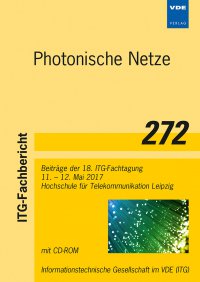Environmental Challenges on Photonics Networks Equipment
Konferenz: Photonische Netze - 18. ITG-Fachtagung
11.05.2017 - 12.05.2017 in Leipzig, Deutschland
Tagungsband: Photonische Netze
Seiten: 5Sprache: EnglischTyp: PDF
Persönliche VDE-Mitglieder erhalten auf diesen Artikel 10% Rabatt
Autoren:
Grobe, Klaus (ADVA Optical Networking SE, Fraunhoferstr. 9a, 82152 Martinsried, Germany)
Inhalt:
Telecommunications equipment belongs to the group of Energy-related Products, ErP. Considering the complete life cycle, they have relevant influence on the usage of energy. For equipment like WDM transport systems, Ethernet switches or IP routers, Life-Cycle Analysis (LCA) reveals that certain environmentally relevant potentials like global-warming or ozone-depletion potential are clearly driven by the use phase of the equipment, i.e., by its energy consumption. For these systems, energy efficiency and its continuous improvement are paramount. Therefore, all relevant aspects like usage of newest and most efficient components, implementation of low-energy modes, optimized voltage supply and network aspects like aggregation and utilization need permanent enhancement. Even then, the energy efficiency of WDM transport systems or IP core routers increases less quickly than the throughput requirements (in Tb/s) for these systems are increasing: the absolute energy consumption of these systems is increasing with new generations, which can pose problems in sustainability assessments. After optimizing the energy efficiency, the next relevant life-cycle parameters must be considered. For telecommunications equipment, these are the material intake and composition, any contributions from the manufacturers’ sites, and all related transport. Material intake can be reduced with the concept of circular economy, i.e., extended lifetime and re-use / recycling. For WDM (and other) systems, this is supported by modular system design. WDM systems also have long lifetime, relative to their clients (switches, routers). Further life-extension / re-use improvements are highly unlikely due to ageing components and functionalities getting obsolete. Therefore, optimized electronics recycling is also relevant. This must already be considered during the design phase.


